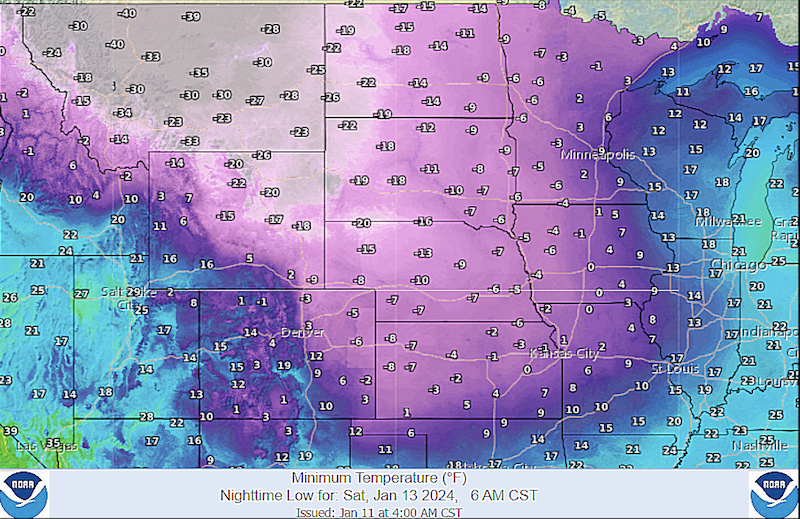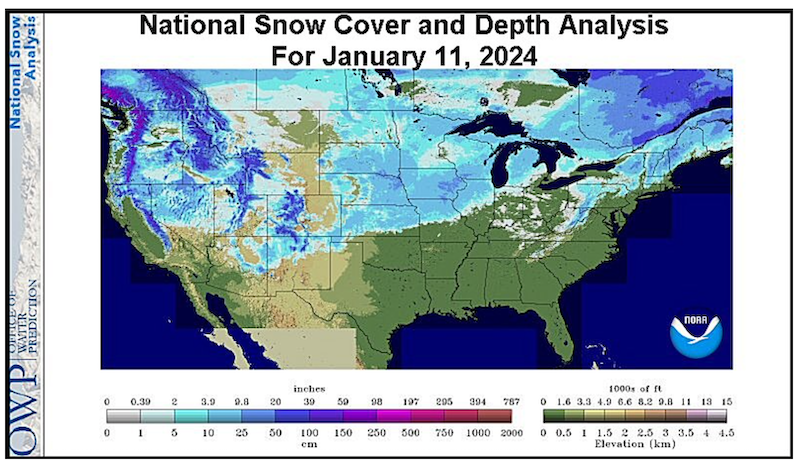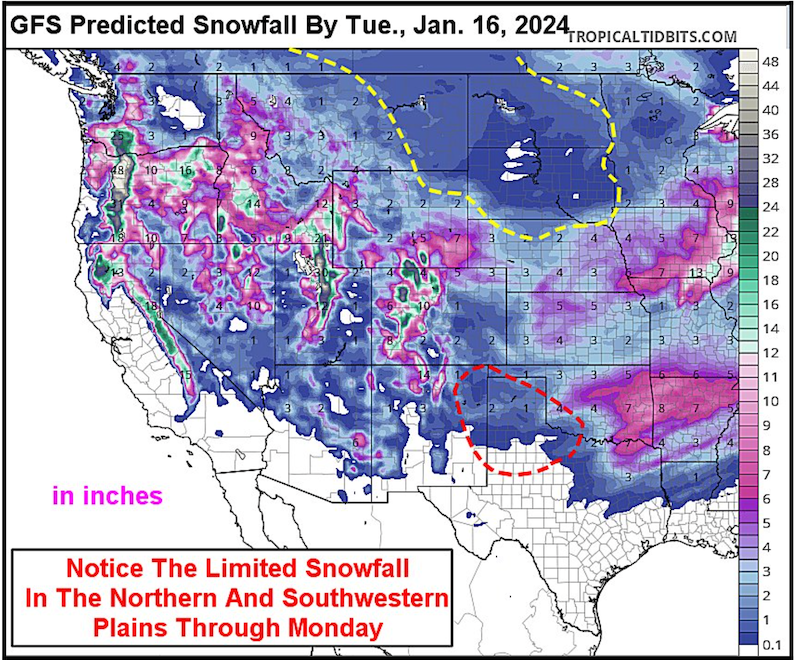Are You Ready For the Polar Plunge? Some Areas Could See Temperatures Plummet to Negative 40 Degrees
USFR-FTF 011324
There’s only one way to describe the cold taking hold of the U.S. right now.
“It's going to be nasty,” says Drew Lerner, an agricultural meteorologist and founder of World Weather. “If you are out in the northwestern Great Plains, it is going to be unbearable.”
Lerner says as snow barrels across the upper Midwest, the cold is creeping into the picture. By this weekend, the frigid temperatures will blanket much of the U.S., but the western Great Plains will be in the bullseye of the cold.
“We are going to see temperatures drop to minus 47 in Montana. Temperatures in the negative 30s and negative 20s will occur in the rest of Montana, as well as in the western parts of the Dakotas, and southward into a part of Wyoming and also western Nebraska.
Those frigid temperatures are for the actual temperature, not even how cold it will be when the wind chill is factored in. Lerner says considering how cold it's going to be, he thinks temperature records will be broken.
“Not only in the northern Great Plains, there may be a couple of spots in the Central Plains,” say Lerner. “But mostly the northern Plains and into Canada will see records. In western Canada's prairies, we will probably see at least a couple of locations get down to minus 50 or minus 49, somewhere in there. So, yes, there will be record cold. Now, for the Midwest, probably not so much. But it'll be cold enough it won't matter.”

Lerner says in parts of the upper Midwest and Red River Basin, temperatures will still drop into the negative teens.
Dangerous for Livestock
It’s Montana and portions of the northern Great Plains that are smashing records with this cold. With minus 30 to minus 40 degree forecasts in some areas, it’s the vicious swing in the temperatures that is what makes the weather such a threat to livestock.
“From a livestock perspective, some of these temperatures are just going to be brutal,” says Lerner. “The animals in Montana have not been adequately hardened against the winter weather because it's been so warm. They've had 50- and even some 60-degree temperatures in the past couple of weeks.”
From 40 degrees above zero earlier this week to now a 40-degree below zero forecast for the coming days, Lerner says it’s dangerous for livestock.
“The situation is going to be stressful for the animals. There might be some reduction in milk production for the dairy areas, and then we've got a little potential for some weight-gain concerns in beef cattle country. That might be an issue,” says Lerner. “And of course, in the hogs' area, we probably will have some stress. I just don't think there's going to be as much of a potential for a big issue there.”
Little Snow Cover Puts Winter Wheat at Risk
From cattle to crops, winter wheat may be exposed to the cold. Lerner doesn’t expect any major problems with damage, but he says what makes the wheat crop at such risk is the fact there’s little to no snow cover in that part of the Great Plains.
“I don't think there's going to be a widespread problem. But in some areas with what little snow is going to be on the ground, the potential is still there that there could be damage done to the crop,” says Lerner.

Stratospheric Warming Causing the Polar Plunge
As much of the U.S. braces for the cold, the positive in the forecast is Lerner thinks the arctic air will be fairly short-lived.
“The whole reason for this event is due to stratospheric warming that took place in late December,” he says. “Stratospheric warming is literally warming that occurs in the stratosphere, that is outside of where we live and outside of where the weather lives.”
The weather lives in the troposphere, which is the layer below the stratosphere. Lerner explains that when the stratosphere turns warmer, it expands that layer in the atmosphere and puts pressure on the troposphere.
“That forces cold air that's aloft down to the surface. And then it gets spread out from the Arctic,” Lerner explains.

At the same time, El Nino is helping drive moisture up from the South, which is causing the severe storms the U.S. saw in areas from the Southwest to the East Coast this week.
As Lerner looks ahead, he’s not only concerned about this week’s cold in the Great Plains, but the fact the northern Great Plains may not see much moisture this winter.
“We will continue to perpetuate storms periodically across the southern U.S. into maybe the lower part of the Midwest and into the Southeast,” says Lerner. “But as far as getting big storms occurring in the western Corn Belt of the northern Great Plains or even the Central Plains that's going to be a little bit harder to come by.”







